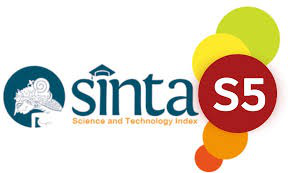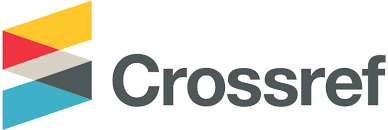Using a Storybook and the Four Resources Model to Foster Critical Literacy in an English as a Foreign Language Classroom
Abstract
The ideology and social-political viewpoints of the author have an impact on their texts. Students should thus assess their reading and writing assignments from several angles and avoid taking any material at face value. However, there is still a lack of literacy practice in the EFL environment that goes beyond breaking down linguistic elements and comprehending the surface material of the texts. As a result, educators should switch from conventional literacy to critical literacy. Beyond just decoding words, critical literacy interprets them in light of their context to conclude the social, political, and ideological viewpoints expressed in the text. This research aims to determine if using a storybook and the four resources model of critical literacy may help first- semester students in the English Language Education Study Program at Universitas Bale Bandung practice critical literacy. The four resources model suggested by Luke and Freebody (1999) served as the foundation for the text discussions. Focus group interviews, classroom observations, and notebooks they kept while researching a tale were all used to gather the data. The results demonstrated that including an account and four resources help pupils strengthen their critical thinking skills. Through breaking codes exercises, discussion of the storybook during the meaning-making stage, comprehension of the story's structural elements and social function during the text-use phase, and critical discussion of the storybook, the students could identify the writer's language choice and challenge social norms. Despite its drawbacks and limitations, this research shows that critical literacy practice is feasible in EFL contexts, particularly in reading classroom.
Keywords
Full Text:
PDFReferences
Abdelhalim, S.M. (2015). Children literature based program for developing EFL primary pupils’ life skills and language learning strategies. English Language Teaching, 8(2), 178-195. https://doi:10.5539/elt.v8n2p178
Abednia, A. (2015). Practicing critical literacy in second language reading. The International Journal of Critical Pedagogy, 6(2), 77- 94. http://libjournal.uncg.edu/ijcp/article/view/1020/853
Abednia, Arman; Izadinia, Mahsa. (2013). Critical pedagogy in ELT classroom: exploring contributions of critical literacy to learners’ critical consciousness. Language Awareness, 22(4), 338–352. https://doi:10.1080/09658416.2012.733400
Afifuddin, M. (2016). Engaging critical literary competence through critical literacy in an EFL setting. Advances in Social Science, Education and Humanities Research (ASSEHR), 82(), 131-134. https://doi.org/10.2991/conaplin 16.2017.28
Aimah, S., & Purwanto, B. (2018). The use of teachers’ questioning strategies to stimulate students’ critical literacy: A case of two English lecturers in Indonesia. Indonesian EFL Journal, 5(1), 27-36. https://doi:10.25134/ieflj.v5i1.1608
Andreotti, V. (2014). Critical literacy: Theories and practices in development education, Policy & Practice: A Development Education Review,19(), 12-32. http://www.developmenteducationreview.com/issue/issue-19/critical-literacy-theories-and-practices-development-education
Anwas, O.M. (2013). Peran teknologi dan komunikasi dalam implementasi kurikulum 2013. Journal of TEKNODIK, 17(1), 493-504 http://dx.doi.org/10.32550/teknodik.v0i0.62
Arizpe, E. (2013). Meaning-making from wordless (or nearly wordless) picture books: What educational reserach expect and what readers have to say. Cambridge Journal of Education, 43(2), 163-176. https://doi:10.1080/0305764X.2013.767879
Asanti, C., & Syamdianita, S. (2017). Encouraging critical literacy development through extensive reading activity in an EFL (English as a foreign language) context. Journal of Culture, Arts, Literature, and Linguistics (CaLLs), 3(2), 127-138. DOI: http://dx.doi.org/10.30872/calls.v3i2.869
Asmini, NI P.J. (2012). A study of the use of children’s literature in the teaching English to young learners at children’s house school. Jurnal Ilmiah Pendidkan dan Pembelajaran Ganesha, 1(12), 1-15, https://www.neliti.com/publications/207009/a-study-of-the-use-of-childrens-literature-in-the-teaching-english-to-young-lear#cite
Baker, Elizabeth A. (2001). The nature of literacy in a technology‐rich, fourth‐grade classroom. Reading Research and Instruction, 40(3), 159–184. https://doi:10.1080/19388070109558342
Barton, D. (2001). Directions for literacy research: Analysing language and social practices in a textually mediated world. Language and Education, 15(2-3), 92–104. https://doi:10.1080/09500780108666803
Bean, Thomas & Moni, Karen. (2003). Developing students' critical literacy: Exploring identity construction in young adult fiction. Journal of Adolescent & Adult Literacy, 46. https://www.researchgate.net/publication/43445426
Beatty, K. (2013). Teaching and Researching Computer-assisted Language Learning, Second Edition. JOUR.
Behrman, H. (2006).Teaching about power, language, and text: A review of classroom practices that support critical literacy. Journal of Adolescent and Adult Literacy, 49( ), 490-498. https://doi.org/10.1598/
Belsky, S. (2006). The effects of using children’s literature with adolescents in the English as a foreign language classroom (Dissertation prepared for the degree of doctor of philosophy). https://digital.library.unt.edu/ark:/67531/metadc5481/m2/1/high_res_d/dissertation.pdf
Blimberg, Christine. (2008). The potential contribution of children’s literature to multilingualism and multiculturalism. Perlinguam, 16(1), 19-31 https://doi:10.5785/16-1-142
Brenner, D. (2012). They read and write, but do they critique? The four resources of literacy practice in Prints-Award-winning literature [online]. https://sccholar.lib.vt.edu/ejournals/ALAN/v39n2/brenner.html
Brown, E. (2004). Using children’s literature with young learners. https://iteslj.org/techniques/Brown=childrenslit.html
Brown, Holly An. 2019. Children’s Literature in the Elementary General Music Classroom. Thesis and Dissertation. 2162. https://dc.uwai.edu/etd/2162
Bui, T. (2016) Critical literacy in an EFL classroom in Vietnam: Agentive empowerment, ideological and language transformation. Vietnam. The Journal of Asia TEFL, 13(4), 247-396 http://dx.doi.org/10.18823/asiatefl.2016.13.4.1.247
DOI: https://doi.org/10.46336/ijeer.v4i2.618
Refbacks
- There are currently no refbacks.
Copyright (c) 2024 Yayu Sri Rahayu, Agus Kusnandar, Wintarsih Wintarsih, Rizki Widiastuti
Published By:
IJEER: Jalan Riung Ampuh No. 3, Riung Bandung, Kota Bandung 40295, Jawa Barat, Indonesia
IJEER Indexed By:
 This work is licensed under a Creative Commons Attribution 4.0 International License.
This work is licensed under a Creative Commons Attribution 4.0 International License.









